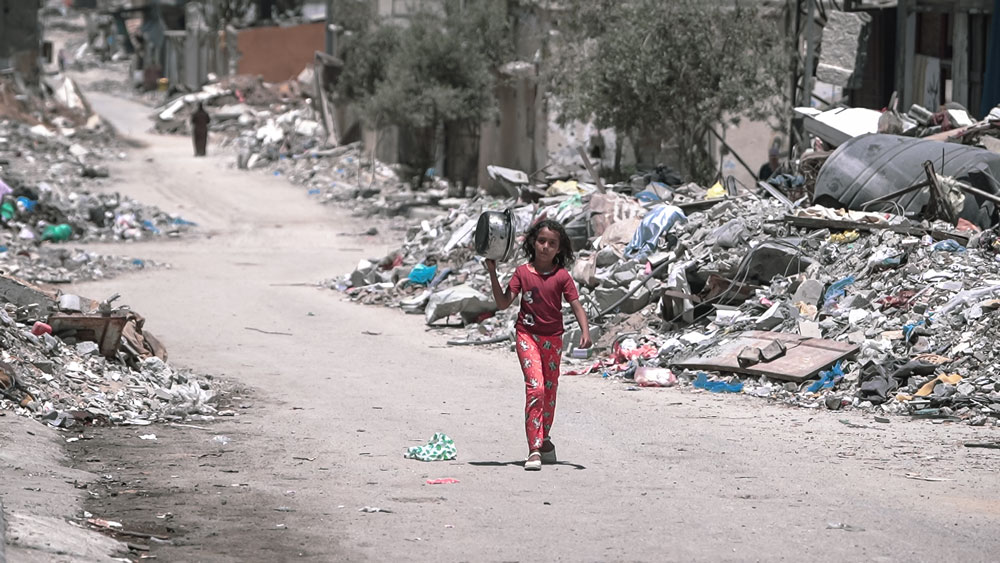Written by Amra Lee
In response to mounting international pressure over the man-made famine in the impoverished coastal strip, Israel partially relaxed its assistance embargo on Gaza this week.
On Sunday, 25 tons of food and humanitarian supplies were dropped by the United Arab Emirates and Jordan. Israel has also declared the creation of humanitarian corridors to allow UN relief deliveries and daily pauses in its military operations on Gaza.
Since May 19, Israel says it has allowed 70 trucks a day to enter the strip. According to the UN, this is far less than the 500–600 trucks needed daily.
The next few days will be crucial for humanitarian organizations attempting to reach the more than two million Gazans living in famine-like conditions, according to UN emergency relief chief Tom Fletcher.
Ninety thousand women and children in Gaza are currently in urgent need of care due to severe malnutrition, and a third of the population has gone days without eating. To date, 147 hunger deaths have been reported by local health officials, with youngsters accounting for 80% of these deaths.
Benjamin Netanyahu, the prime minister of Israel, asserted that there is no malnutrition in Gaza without providing any supporting data. World leaders, including US President Donald Trump, an ally of Netanyahu, have denied this notion.
Alex de Waalhas, a famine specialist, described the starvation in Gaza as unprecedented:
There has never been a mass starvation of a populace so carefully planned, meticulously watched, and meticulously engineered as is occurring in Gaza now.
The UN has applauded the partial relaxation of the blockade, but given the extent and severity of hunger in Gaza and the people’s health requirements, the aid being permitted into Gaza will not be sufficient to prevent a greater catastrophe.
Only one solution will suffice, according to the UN World Food Programme, which has enough food on hand to sustain Gaza for three months:
The only way to reach everyone is with a ceasefire that has been agreed upon.
Airdrops a distraction and a smokescreen
Because airdropping food supplies is a dangerous and undignified way to provide aid, it is only used as a last resort.
Packages falling on tents have already resulted in injuries to people, according to UN reports.
A woman in Al Karama, east of Gaza City, told the Global Protection Cluster, a network of non-governmental organizations and UN agencies, about how an airdropped pallet damaged her home and caused the roof to collapse:
In order to safeguard her family, the mother locked herself and her kids in the remaining room while a gang of people brandishing knives raced towards the house right after the collision. They are afraid for their safety and did not receive any help.
Pallets of food that are airdropped are likewise less efficient than those that may be transported by road.
Up to 20 tonnes of supplies can be transported by a single truck. If trucks are let to cross at the necessary scale, they can also arrive in Gaza rapidly. Aid organizations have stated time and time again that they have the staff and aid they need at the border, barely an hour away.
The chief of the UN Relief Works Agency (UNRWA) for Palestine has referred to the air drops as a smokescreen and a distraction due to their ineffectiveness, which will only increase.
Malnourished women and children need specialised care
De Waal has also clarified that famine is distinct from other war crimes in that it requires weeks of deprivation of help before it manifests.
The kind of food being airdropped into Gaza won’t help the 90,000 severely malnourished women and children who need specialized and additional feeding in addition to medical care. Children who are malnourished need access to baby food and enriched pastes, as well as nutritional screening.
Extremely malnourished women and children who run the risk of refeeding syndrome when given nutrition again cannot be treated by Gaza’s crippled health system. This may cause a lethal metabolic reaction.
It will take generations for Gaza to recover from the long-term effects of widespread famine. Children who are malnourished experience physical and cognitive impairments that last a lifetime and can be inherited by subsequent generations.
What needs to happen now
If maintained and extended, the UN has described the limited restoration of assistance delivery to Gaza as a potential lifeline.
What is required is brutally straightforward, according to Ciaran Donnelly of the International Rescue Committee: Israel must completely open the borders of Gaza to let aid and humanitarian workers pour in.
Israel must also ensure that everyone, including women, children, the elderly, and those with disabilities, can receive aid in a dignified manner. These groups are more vulnerable to exclusion due to the severity of hunger and insecurity.
For the time being, the world is focused on the people of Gaza. For almost 21 months, they have been subjected to progressively more inhumane circumstances, such as the possibility of being shot while attempting to obtain aid under the guise of war.
Israel’s war on Gaza has recently been referred to as a genocide by two prominent Israeli human rights organizations. All governments are required by international law to take action to avoid genocide, and this reinforces the growing body of data gathered by the UN and other experts that supports the same conclusion.
States must use all of their diplomatic might to persuade Israel to allow relief in the amount needed to prevent hunger, as these commitments need for more than just words. States must also put pressure on Israel to prolong its military pauses in order to achieve a lasting truce, which is the only long-term option.
![]()
Amra Lee is a PhD candidate at Australian National University specializing in the protection of civilians.







